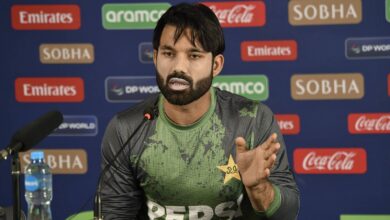The chemry needed to make mixed doubles work for Indian badminton

Their chemry lay in not combusting, and ending up hating each other. Doing it their own way – not overtly involved in the other’s life without being indifferent, not really demanding much of the other, without being resentful – Jwala Gutta and V Diju built themselves an excellent working partnership in badminton’s mixed doubles, reaching World No 7 in 2009, and staying in the Top 10 for almost a year.There was no pretence to fondness, though Jwala, as is her personality, would always be protective of Diju and effusive in giving him credit, once taking 80 percent of shuttles, and still calling Diju a star for playing with high temperature. She really meant it too. Diju was always respectful towards Jwala and often called her game better than his own, but back in 2009 he didn’t really bother with chivalry. Once while yapping away gloriously and walking backwards, Jwala got tangled in her own feet, and fell down. Diju didn’t stop laughing. On the badminton court, the barely-coached pairing were crackling good – and were it not for their fitness concerns, they would have won considerably more.
Post-Paris has been brutal on mixed doubles pairings throughout the world, from China to Thailand to Korea to a particularly prickly parting of ways of a much-adored Malaysian pairing, Chen Tang Jie and Toh Ee Wei.
Story continues below this ad
It’s also coincided with two young Indian XD pairs, Tanisha Crasto-Dhruv Kapila and Aadya Variyath–Sathish Karunakaran, rising in the rankings, with the former in Top 20 now. As India try to prop up its weakest sector with talented pairings trying to crack the Top 10, a Jwala-Diju recap could prove useful. They were so professional, they somehow climbed 82 ranking places in 7 months in 2009 and got some eye-popping results.
As such, they were India’s first doubles stars, before Satwik-Chirag, Treesa-Gayatri or even Jwala-Ashwini. And they didn’t bother exchanging friendship bands in all those years.
Mixed doubles equations can at times even end in marriages in badminton. But a majority of the times, these are just very fragile bonds that need to be carefully pushed towards high performance. Being understanding and always polite could be one way to go about it – through injury, poor form, pivotal makes and personality clashes. Or you do it the Jwala-Diju way: know that they are a fine partnership, and say pretty much whatever pops into the head about the other.
“He’s a little lazy, imagine lazier than me,” Jwala said about Diju once, with Diju standing right there with a poker face, humming a Malayalam song. He patiently waited for his turn and declared, “I’m obviously much more hard working than her.” Jwala didn’t bother retorting either, still giddy about the Chinese Taipei Grand Prix Gold they had won. She would waltz away with a beaming smile, and the two would barely speak till warmups of the next game or practice.Story continues below this ad
Diju is a fairly matter-of-fact speaker, and would later say, “I have no clue why we click. I’ve been thinking about that for long too. If we talk too much off court, we’ll end up fighting on it. I do my own thing, she does her’s. She talks, I don’t.”
The sheer professionalism of never interfering in the other’s life brought massive dividends. 15 Aprils ago, 4 Indians made the quarterfinals of Asian Badminton Championship – including the doubles duo. Earlier, Jwala-Diju stunned Indonesian Hendra Aprida Gunawan and Vita Marissa for the Taiwan crown.
On the badminton court, the barely-coached pairing of Jwala Gutta and V Diju were crackling good – and were it not for their fitness concerns, they would have won considerably more.
India’s doubles coach, Indonesian
Hadi Sugianto had suggested their pairing, though mostly as an afterthought to splitting Diju with Sanave Thomas, who was linked up with Rupesh Kumar for a men’s doubles combine. That left Diju unpaired, and he approached the similarly tall and hard-hitting, albeit leftie, Jwala. The two would win Indonesia Satellite almost immediately and follow up with Welsh Open. Both knew they could seriously trouble top pairings, and titles would follow from Bitburger (Germany) and Bulgaria.Story continues below this ad
Beating Polish Robert Mateuisiak and Nadiedza Kostiuczyk, the duo would even make the finals of season ending tour finals. And defeat Nova Widianto and Lilyana Natsir at Korean Super Series, while ranked No 27 on the circuit.
Amidst these fine results, Indian badminton was still amateurish. The federation once forgot to send their entries, alongside Saina Nehwal’s, for China Masters. At the 2009 World Championships in Hyderabad, Jwala would say, “Sometimes we feel neglected when only singles gets all attention. But we never had role models to follow like in singles. We came up our own hard way and this far.” Still, their contrasting personalities and big power game, plus an edgy ambition to prove the world wrong, made them formidable.
The fitness concerns were real. Her backhand remained sluggish, his movement on the back court – even if Jwala could scythe from the back – remained under pressure. Persent back issues would always hold him back, and Jwala was one click too slow on the front court compared to the top consent XD names of the day.
The men come under immense pressure, Diju says, in mixed doubles, having to cover the back half. And their combined speed lagged a little, though both had wicked serve variations and aggression to cause upsets once in a while.Story continues below this ad
Diju reckons that for Jwala, as well as present-day XD women – Tanisha, Aadya or Ruthvika Gadde – that quickfire movement to the front is absolutely pivotal. Think Chirag Shetty or Gayatri Gopichand now, the speed to charge the net and take control defines mixed doubles. The fast drives in order to attack the opposing woman demands the sort of fierce, fearless temperament that Jwala had, but which Tanisha needs to build.
“Tanisha should only play mixed doubles, it’s important now. She will be a different player once she focusses on mixed. Right now she is a little erratic in control and slow because she has too much on her plate with two events,” Diju says. “Dhruv has good calm temperament but can improve on defense.” He is impressed with Sathish: “His serves and power are good. But smashes need to get steeper in XD.”
Mixed doubles sees far longer rallies now, and a sort of bold approach where all the crosses are not targeted at the woman. The longer the rally goes, the more the likelihood that you need to smash down the middle or even attack the man.
“We should seriously consider a separate coach for mixed doubles, because it’s very different from normal doubles,” Diju stresses. Jwala-Diju mixed and matched tactics, trialed and erred plenty, before their ranking went into free fall after injury. But they dabbled plenty and dazzled a bit in what is badminton’s toughest jigsaw to piece together with speed and power and tactics and individual personalities all at play at once in XD.Story continues below this ad
“We want to make semis and finals of Super Series. It will happen soon,” Diju had said soon after his GP Gold title in 2009. Sixteen years have passed, and with Tanisha-Dhruv there’s a ray of hope. But speed is key, and Diju says it’s high time just a Top 10 wasn’t seen as enough Indians. Jwala-Diju got there with little help, just absolute belief that they made a good team. There was sufficient chemry alright, not even needing a catalyst.
She spoke, he didn’t = a winning formula.






